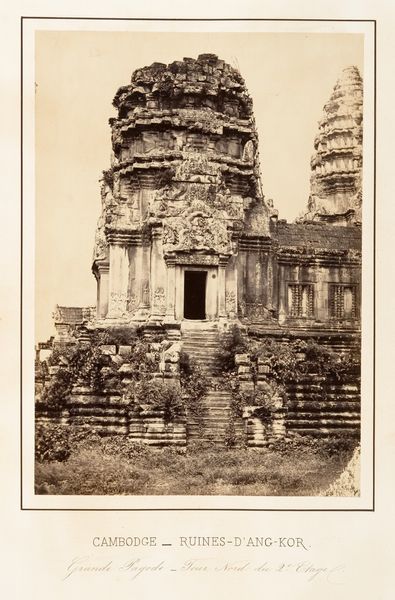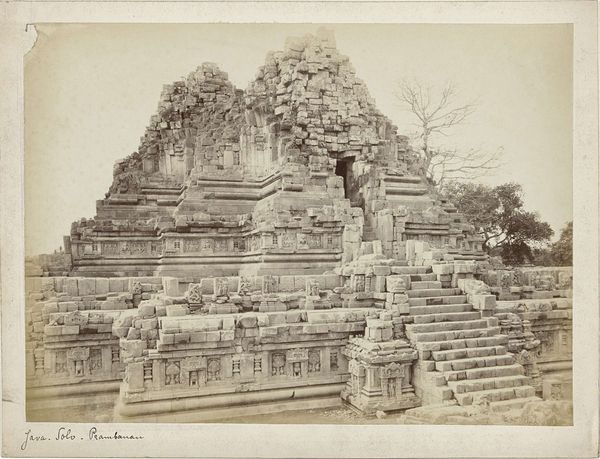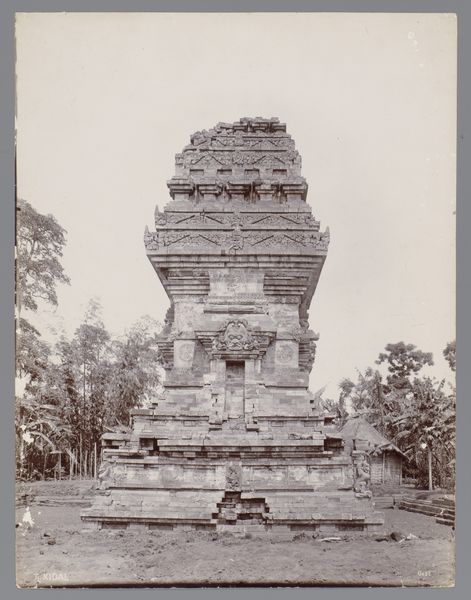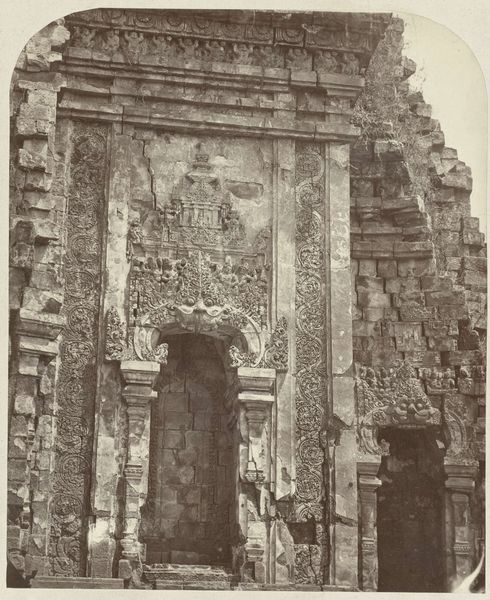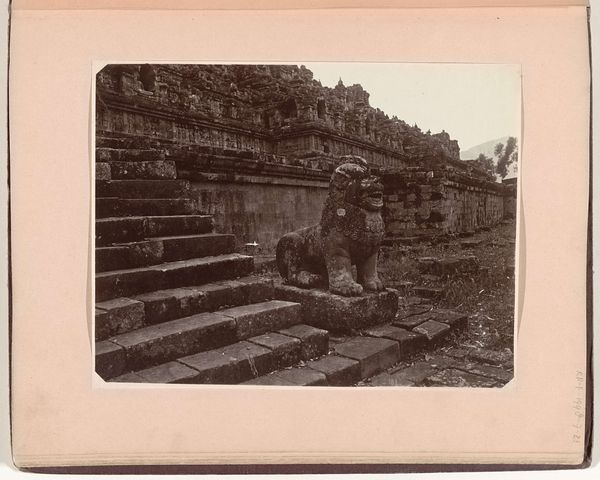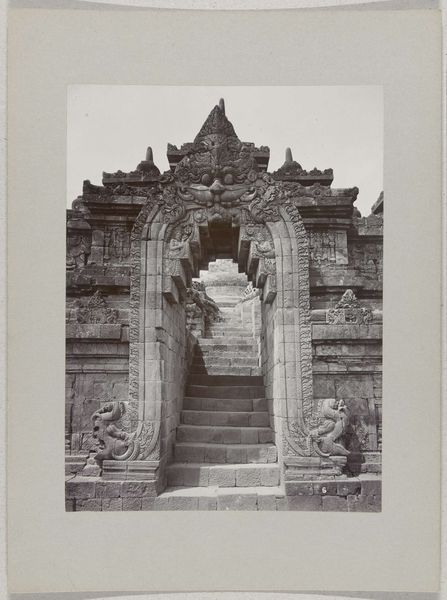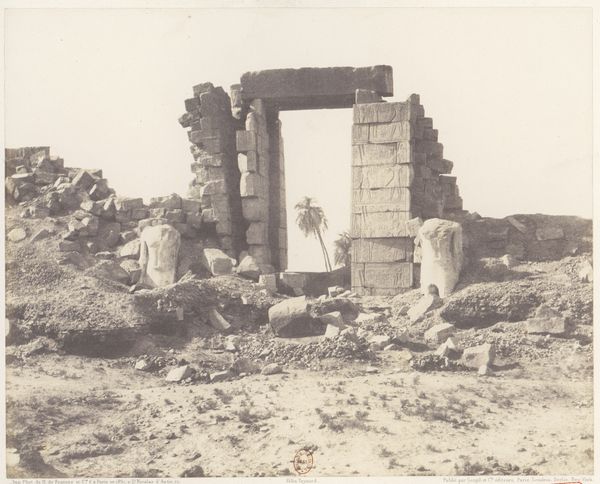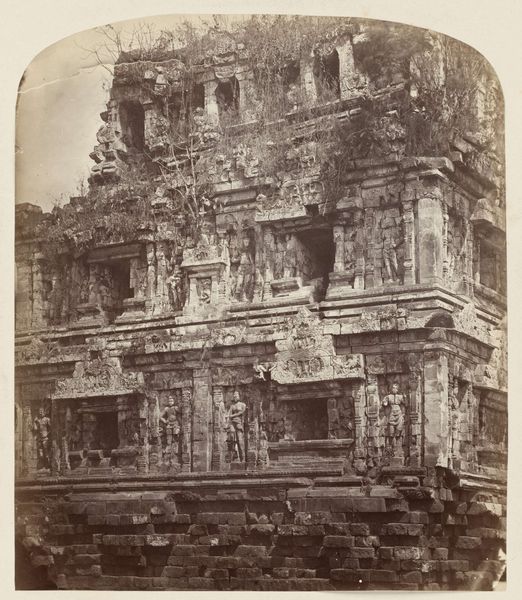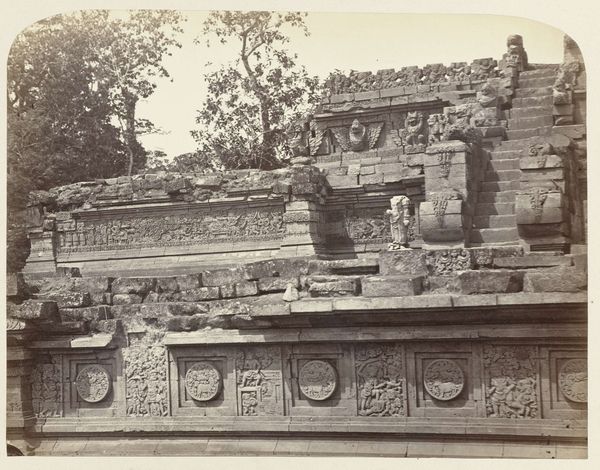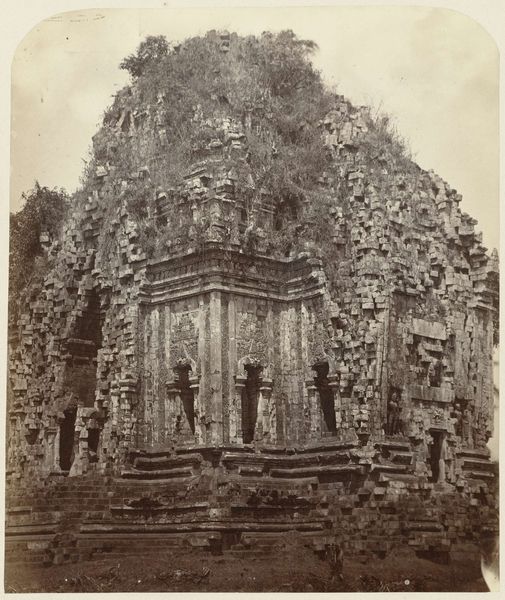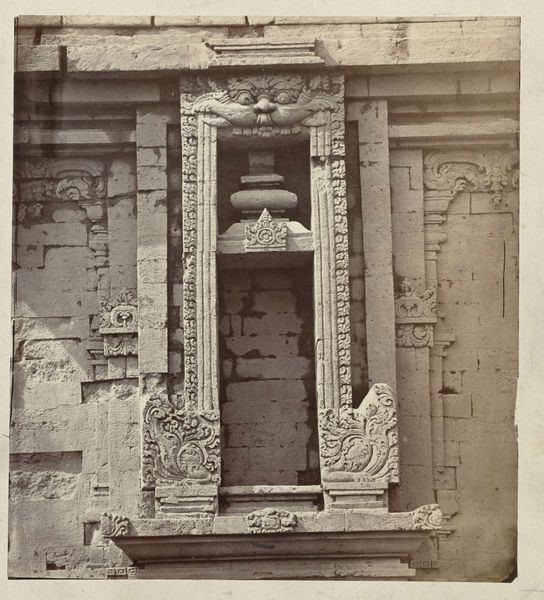
photography, albumen-print, architecture
#
asian-art
#
landscape
#
indigenism
#
photography
#
ancient-mediterranean
#
albumen-print
#
architecture
Dimensions: height 220 mm, width 163 mm, height 238 mm, width 185 mm
Copyright: Rijks Museum: Open Domain
Curator: Here we see an albumen print created around 1872. The photographer was Kassian Céphas. This work, held at the Rijksmuseum, is titled "Javaanse man bestijgt een van de trappen van de Borobudur" which translates to "Javanese man climbing one of the stairs of Borobudur". Editor: Immediately I am struck by the stark contrast between the immense, ancient stone structure and the lone figure ascending it. There is something undeniably haunting about this image. Curator: It speaks volumes about perspective, doesn't it? We are presented with this magnificent Borobudur temple, likely built in the 9th century, and suddenly made aware of the complex sociopolitical context of the colonial gaze capturing indigenous life. This image isn't just about architecture; it’s about the power dynamics inherent in image-making during that era. Editor: The steps themselves are compelling as potent symbols of ascension and transformation. Think about the spiritual weight that steps, stairs, and ladders have carried across cultures. This isn’t just any temple; Borobudur is a mandala, a sacred space mirroring a path toward enlightenment. Curator: Yes, but whose enlightenment? The figure seems almost absorbed by the sheer scale and history. Was this photograph intended as documentation, or was there an implied message about the role and status of Javanese people in the face of Dutch colonial power? It highlights indigenism as a style of representing and framing colonial relations. Editor: I do agree with the undeniable tension in the figure’s representation as he ascends. At the same time, I cannot ignore the recurring visual elements carved into the temple. The faces and decorative foliage signal fertility, abundance, and spiritual guidance that speaks across histories and cultural differences. It makes one question the colonial frame that cannot fully silence ancestral visual cultures. Curator: That tension is precisely what makes this piece so fascinating, don't you think? Editor: Indeed! I now recognize within it multiple timelines speaking and converging. A reminder that single perspectives of a colonial lens always carry embedded ancestral memory within them.
Comments
No comments
Be the first to comment and join the conversation on the ultimate creative platform.
